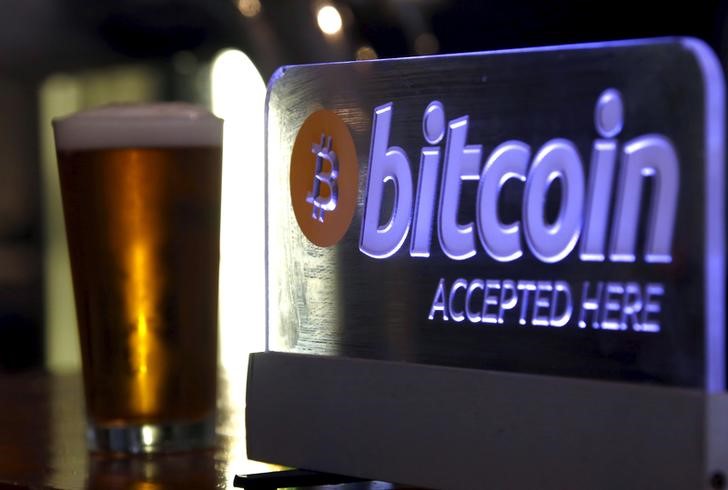The future for crypto is bright, with some already well-established and well-known cryptocurrencies increasing their price by up to 400% by the second half of 2022, at least according to the impressive predictions of some – perhaps overly – optimist analysts.
Analysts' Predictions for Bitcoin and Altcoin Prices
FSInsight, an independent research firm based in the US, claims that Bitcoin (CRYPTO: BTC) could reach a price tag of $200,000, while Ethereum (CRYPTO: ETH), the next shiny new toy of many crypto enthusiasts, could leave its current $2,600-ish price tag and park at about $12,000.
Still, according to FSInsight, we have DeFi (decentralized finance), an umbrella term comprising a myriad of financial applications built within the blockchain and cryptocurrency technological thresholds with the intent to disrupt intermediaries in financial transactions, NFTs (non-fungible tokens), and other Web3 apps pushing for developments and growth of Ethereum, consequently inspiring changes and developments in other cryptocurrencies based around the same principles.
During an interview for CNBC, Tom Lee, co-founder of Fundstrat Global Advisor, said that for Bitcoin to reach such a price cap it would be necessary that existing investors move into crypto, which looks yet unlikely, and that regulatory measures to legitimize the digital asset sector be actually taken, which does not seem to be a priority to the US Congress – something that might change as the midterms approach.
While counting on that $200K figure might be unrealistic, experts tend to agree that Bitcoin could reach $100,000, with Goldman Sachs (NYSE:GS) predicting that exact figure, and Citigroup (NYSE:C) betting on a whopping $300,000 – a prediction made for 2021 and not yet revised by the group.
On the other side of the discussion, Peter Schiff, a crypto critic, said that should Bitcoin’s price drop below $30,000 there would be nothing keeping it from stabilizing at the $10,000 cap.
Another point of discussion among experts is the investing potential of altcoins like Cardano, regarded by many as the coin to buy in 2022. The coin that once reached its all-time high in September 2021 ($3.10), is now trading at $0.0798, with updates to the smart contract capabilities and promises of other updates and improvements on the horizon from Cardano developers Input Output Hong Kong (IOHK). These constant and continuous improvements may steer investors eager to buy the dip, thus increasing its market value. The Economic Times, judging from the historic rise of Cardano’s prices, estimates that as soon as 2023 the coin could reach £5 (~$6.54), and double that amount in 2025.
Binance (CRYPTO: BTC) analysts have compiled predictions for other 6 promising cryptocurrencies, from (CRYPTO: DOGE) and (CRYPTO: SHIB), popular meme coins that were - and are still - backed by enthusiasts and developers like Elon Musk and Vitalik Buterin, respectively, to (CRYPTO: XRP), (CRYPTO: MATIC), and BNB. In their words, newer functionalities of crypto have the potential to push for mainstream adoption in the coming years. That happening, the crypto industry is (very) well poised to break “its 2021 highs of $3 trillion”.
From Government-Backed to Green Blockchains
Parting ways with financial speculation, Forbes Councils member Sani Abdul-Jabbar predicts that 2022 will be marked by wider governmental adoption of blockchain technology, citing Australia and Estonia as the cornerstones of government-blockchain innovation, with the former searching for ways to develop a platform that can be used for nation-wide elections, thus increasing participation and accessibility while decreasing, or hopefully rooting out fraud schemes; and the latter providing many state services in online platforms for all of their population by means of extensive blockchains built for that specific purpose. Important to mention is that the single source for Australia's implementation of the blockchain technology for voting dates back to 2016, and no article later than 2019 has been published by the main advocate of said implementation, indicating a possible delay or unforeseen difficulties comprising that particular strategy.
As the technology becomes more widespread, analysts also see more space for crypto to be accepted as legal tender, following President Nayib Bukele's actions in El Salvador. Despite no evidence suggesting progress in that regard, some analysts contend that Panama or Cuba might be the next countries to participate, citing El Salvador's proximity and a recent draft of legislation.
On a different note, experts also expect NFTs to find more niche spaces outside of works of art and mere collectibles – utility, gaming, and as keys to access exclusive communities nodding to what many enthusiasts refer to as “the metaverse”.
Niche or not, however, the blockchain as a whole has been suffering criticism in regards to the immense energy demands required to operate effectively, thus not being a sustainable model for the environment.
Elon Musk's decision to stop Bitcoin payments back in January 2021 due to sustainability has also led to a rush to secure alternatives to the current Proof of Work (PoW) model, mainly shifting to a Proof of Stake (PoS) model, which reduces energy consumption by 99.5%.
Governments and mainstream investors require alternative solutions like PoS to integrate with cryptocurrency, so it makes sense to anticipate advances in this field soon.
Final Thoughts
Despite the fact that many seem enthusiastic about the crypto market for 2022, it is important to exercise caution. None of the analysts took into account what could happen in the case of a war, which while understandable, puts in check many projections established earlier this year.
The Russian invasion of Ukraine has shown us both the good and the less than good aspects of crypto, enabling individuals and organizations to donate to human rights causes seeking to provide help to those in need in Ukraine (and in Russia), and also as a safe haven for the extremely rich and corrupt to deposit their ill-gotten gains in order to avoid “special financial operations”. The latter has already been targeted by law and financial institutions alike, and lack of compliance might turn those positive predictions into wishful thoughts.
© 2022 Benzinga.com. Benzinga does not provide investment advice. All rights reserved.
